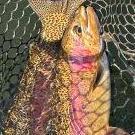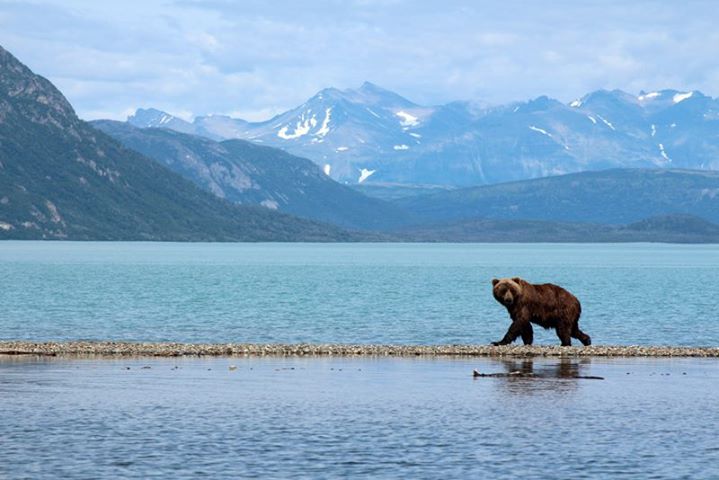-
Posts
18,931 -
Joined
-
Last visited
-
Days Won
123
Content Type
Profiles
Forums
Blogs
Events
Articles
Video Feed
Gallery
Everything posted by Phil Lilley
-

Trout Unlimited Unveils Position On Warming
Phil Lilley replied to Phil Lilley's topic in Conservation Issues
Saw a piece on 60 minutes tonight about the incredible increase of US fires the last 7 years. I wonder if it's the same in other parts of the world and if the fires themselves contribute to warming or could it damage the atmosphere? Wondering... by a complete novice. -
Everyone has to understand that there are over 2000 members on this forum and countless guests who read it. Just because there are one or two people reacting poorly to your ideas doesn't mean there are many others who aren't typing that are thinking positively. Don't let a couple of people keep you from expressing your opinions and ideas on this forum- please!! Forums are bad in one way- people can get away with typing whatever they want about ideas and others cause forums are impersonal. You can't see the other person nor can you see their heart. But if you just ignore the bad and go with the good, you'll be much better off. You have to do alot of ignoring on alot of forums Fortunately you don't have to ignore too much here.
-
Eric reported to me today that the tournament in December was canceldd due to weather. New date- January 27, 2008 Raised $500 so far for the family. Thanks for giving!!
-
Got 10 teams registered so far for Masters... should have 25-30 boats in the tournament.
-
Where do you work, Greg?
-
I think you misread my post. No arguing there... my intention was to say the state of the church in this country and Christians in general isn't any example that most non-believers would want to copy and that is their fault- for being hypocrites, lazy, spoiled. And I lead in every category. Setting all "religions" aside, every human being makes decisions in his life- choices he will have to answer to after this life. We will all stand alone before our creator, transparent and without excuse. Sorry if I sounded as if I was judging... didn't mean to. That wouldn't be my job.
-
I'd like for someone to critique my cast cause I have no idea what I do- I just cast! I side arm, over the head, over the left shoulder, lay it out to the right and left depending on wind and current direction. I don't think about it. I do understand why an instructor needs to KNOW how a cast breaks down because he is teaching someone what to do and not. That's what I need to learn.
-
I've always told people to get the line off the water by lifting UP first using the rod tip. It's a hard concept for some to "see" but once they do it a couple of times, they see it. Thanks for the comments... makes us all think about what we are doing instead of just doing it.
-
Trav- you are 100% right about the human race. Outside of something miraculous, there is absolutely NO hope. And if you don't believe in the miraculous... then there is just today and what enjoyment you can find in it. And what DO we see in today's "religious" people? Pretty much the same thing you see in the rest of the world- people void of love, joy and peace. So why should anyone want to join their ranks? It should make a "religious" person hit their knees and cry out to God for mercy. THAT'S what needs to happen in this country. It's happening in other parts of this world where believers are getting put in prison, beaten, tortured and killed for their faith, but not here.
-
Al, thanks for joining us. Is there a site where we can find out more about your clinics? I would be very interested in driving down for a class and I'm sure there are others. I've been to Glenn Rose- 1978. I was there with a class from college to see the dinosaur park.
-
Boated up just above Short Creek with long time friend Tom Burckhardt (in his boat) and fished from 3:30 till 5 this evening. Threw one jig- 1/8th sculpin jig, 4 lb line, worked off the bottom mid lake and caught fish the whole time- both of us did. Some nice rainbows up to 1.5 pounds. Fun evening!
-
John Wilson has offered help in getting certified in the past.
-
From Gary Borger's site http://www.garyborger.com/Data/FFF%20Casti...tification.html As a founding Board Member of the FFF Casting Certification Program, I have witnessed the growth of both the Program and the wide-spread acceptance of its validity in the fly fishing community. There are many candidates each year applying for certification, and I am fortunate to be involved in certifying them both at the Casting Instructor (CI) and Master Casting Instructor (MCI) levels at various events across the U.S. I find that many candidates at both the CI and MCI levels are not prepared for the rigors of the exams. Most often I witness the following gaps in preparation. 1. Candidates have good head knowledge of casting but are poorly prepared for the practical exam involving both the casting process and the teaching of it. Please remember that the FFF exams are teaching oriented. At both the CI and MCI levels, candidates assume that they need to be able to demonstrate casting ability to the exclusion of teaching. Please do not make that mistake. You must be able to cast, of course, but you must also be able to teach in a way that is easily understood by those who know little or nothing about casting and fly fishing. 2. All those that do the certification want to see the candidates relaxed in their casting and teaching approach. Yes, it is an exam and everyone understands that the candidate will be under some stress. This is in part intentional because the candidate should be able to cast as if he/she had been doing it for years, not for just the past few weeks in preparation for the exam. 3. Spey casting is essential, but so is all the rest of it. You must understand casting and be able to execute it from experience, not just from text-book knowledge. It’s OK to repeat what an experienced caster has written, but then that information must also be in your hands and in your explanation. 4. Don’t try to take the MCI for at least a year after you complete the CI. The difference in these exams is huge. The MCI exam is tough, tough, tough. Remember, anyone that is certified at the MCI level has the privilege in helping to certify CI candidates AND has the potential of being elected to the BOG. Being a BOG member is NOT only an honor, it is a privilege, and it is bestowed only on those who exhibit the highest ability in ALL the teaching aspects and practical aspects of casting and fly fishing. When I test an MCI candidate, I am always asking myself, “Does this person have what is needed to certify CI candidates and to be a BOG member.” 5. Teach, teach, teach, cast, cast, cast, fish, fish, fish. The more you teach under the guidance of someone who is certified, the greater your knowledge base becomes and the easier the exams will be. The more you cast, the easier and more relaxed your casting will be. The more you fish, the broader you overall knowledge base will become.
-
I am, too, interested in taking the test. After I get my USCG 6-pack out of the way, I want to start on it. So whatever you find out, let me (us) know.
-
Thanks guys
-
Don't know much about it except what John Wilson has told me... you might ask over on his forum, as well as here. http://p088.ezboard.com/bflyfishingarkansasandmissouri
-
a. Babler told me today that TR's temp is just now dropping below 50. I'd say next cold spell, it should turn, if not before. Change? None. We may see more generation though. Jan 1-2 it's supposed to be fairly cold and windy. b. 6 miles on flat water- it's going to take along time I'd say. I'd shorten the trip to Riverpointe Estate's ramp.
-
I get to meet a lot of fishermen in my work, and I love talking with them. Fishermen are the salt of the earth and some of the best people you could ever meet. One of the things I love about bass fishermen is that we're always trying to learn more about the sport we love — a new technique, a new lure, a new way to sharpen hooks, whatever. Read More
-
Very top right next to help, search, members and calendar.
-
I still want to do a calendar... probably will make it for 18 months starting June 2008. But I need more images. I have a few real good ones of fish and scenic rivers and springs. I need more... a good lake pic, if there's such a thing. More winter pics too. Seasonal is always good. And I need them as large as possible- 300 dpi if possible. I could go buy images on line but I'd like images of waters here in the ozarks. Email them to lilley at lilleyslanding.com
-
I've been doing this for about 5 years, or more. We aren't busy during the week for the months of January and February and can offer lodging specials for those who can get away during the week. Unfortunately, we are full most weekends and so we can't offer anything on weekend days. For the nights of Sunday, Monday, Tuesday, Wednesday and most Thursdays, 2-3 people can stay here for $29 per night, 2-night minimum please. We pick the room, depending on availability. In exchange for this special rate, we ask that the party write a report either on the forum or emailed to me within 24 hours of returning from the trip. The report needs to be as detailed as possible. Reservations are to made by email or PM only to me. Don't call our office- they'll tell you to email me.
-
We headed to Sarasota to visit Marsha's sister and family in a few weeks- then headed down to Islamorada for a few days, meeting Jim Johnson and his family. Getting a house boat and tooling around the place. Never been down there. Any suggestions about things to do, places to eat, fish to catch?
-
I don't go to the blogs enough... I see there's a bunch of people who have created a blog but have not made any entries. At first, it was kinda confusing how to make your entry "published" but I eliminated that step. Now there's an error page that appears when you submit an entry but if you hit the refresh link it will go ahead and post the entry. I have to go and ask about the error thing. Need also to ask about why we can't attach images too. Would love to see the blog option used... just adds to the overall readability of the site.
-
very very little


